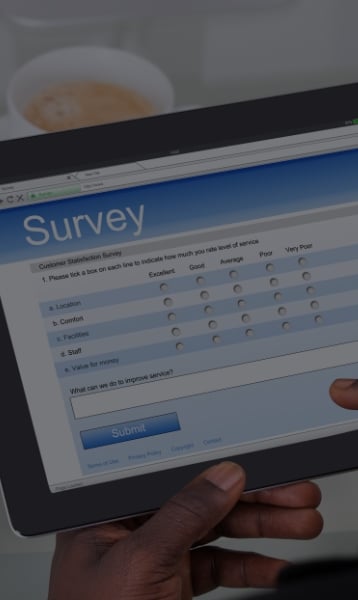[fusion_builder_container hundred_percent="no" equal_height_columns="no" menu_anchor="" hide_on_mobile="small-visibility,medium-visibility,large-visibility" class="" id="" background_color="" background_image="" background_position="center center" background_repeat="no-repeat" fade="no" background_parallax="none" parallax_speed="0.3" video_mp4="" video_webm="" video_ogv="" video_url="" video_aspect_ratio="16:9" video_loop="yes" video_mute="yes" overlay_color="" video_preview_image="" border_size="" border_color="" border_style="solid" padding_top="" padding_bottom="" padding_left="" padding_right=""][fusion_builder_row][fusion_builder_column type="1_1" layout="1_1" background_position="left top" background_color="" border_size="" border_color="" border_style="solid" border_position="all" spacing="yes" background_image="" background_repeat="no-repeat" padding_top="" padding_right="" padding_bottom="" padding_left="" margin_top="0px" margin_bottom="0px" class="" id="" animation_type="" animation_speed="0.3" animation_direction="left" hide_on_mobile="small-visibility,medium-visibility,large-visibility" center_content="no" last="no" min_height="" hover_type="none" link=""][fusion_text columns="" column_min_width="" column_spacing="" rule_style="default" rule_size="" rule_color="" class="" id=""]
What Really Happens When a Co-Worker Takes Extended Leave?
Perspectives From 538 Employees
Productivity Implications for Employer Leave Strategies
Several states and municipalities appear poised to adopt paid leave laws that cover most employees. To help employers design leave policies that sustain productivity with minimal impact to staff workloads, morale, and personnel costs, IBI surveyed U.S. employees about their experiences with co-workers’ extended leaves.
The survey results indicate that while expansions of paid leave greatly benefit employees who need time off, increased stressors on co-workers who cover absent workers’ responsibilities may impose challenges to employers.
Study highlights
- Three in four employees worked as part of a team or work group. Among these employees, three in five experienced a co-worker’s extended absence (two weeks or more) for a health, bonding, or family leave reason in the previous 12 months.
- Nearly half of employees who experienced a co-worker’s extended absence reported at least one associated personal or business consequence. One in five reported more than one consequence. The most common consequences were personal, such as increased stress or difficulty completing one’s own work.
- More than half of employees who experienced a co-worker’s extended absence reported that staff took on the absent employee's responsibilities. One in three reported that staff put in more overtime or spent more time at work than usual. Obtaining extra help such as the use of temporary replacements or outsourcing work was reported infrequently.
- Adaptations such as having staff spend more time at work or perform an absent worker’s responsibilities were significantly associated with greater personal consequences. More time at work and outsourcing were significantly associated with greater productivity consequences. These outcomes may undermine other company priorities such as retention and emotional well-being.
[/fusion_text][/fusion_builder_column][/fusion_builder_row][/fusion_builder_container][fusion_builder_container hundred_percent="no" hundred_percent_height="no" hundred_percent_height_scroll="no" hundred_percent_height_center_content="yes" equal_height_columns="no" menu_anchor="" hide_on_mobile="small-visibility,medium-visibility,large-visibility" class="" id="" background_color="" background_image="" background_position="center center" background_repeat="no-repeat" fade="no" background_parallax="none" enable_mobile="no" parallax_speed="0.3" video_mp4="" video_webm="" video_ogv="" video_url="" video_aspect_ratio="16:9" video_loop="yes" video_mute="yes" video_preview_image="" border_size="" border_color="" border_style="solid" margin_top="" margin_bottom="" padding_top="" padding_right="" padding_bottom="" padding_left=""][fusion_builder_row][fusion_builder_column type="1_1" layout="1_1" spacing="" center_content="no" link="" target="_self" min_height="" hide_on_mobile="small-visibility,medium-visibility,large-visibility" class="" id="" background_color="" background_image="" background_position="left top" background_repeat="no-repeat" hover_type="none" border_size="0" border_color="" border_style="solid" border_position="all" padding_top="" padding_right="" padding_bottom="" padding_left="" margin_top="" margin_bottom="" animation_type="" animation_direction="left" animation_speed="0.3" animation_offset="" last="no"][fusion_title margin_top="20px" margin_bottom="15px" hide_on_mobile="small-visibility,medium-visibility,large-visibility" class="" id="" size="1" content_align="center" style_type="none" sep_color=""]
Guidance for Employers
[/fusion_title][fusion_text columns="" column_min_width="" column_spacing="" rule_style="default" rule_size="" rule_color="" class="" id=""]
To help employers develop leave strategies that sustain productivity with minimal impacts to staff workloads, morale, and personnel costs, IBI sought input from experts at leading healthcare, benefits and absence management firms. More details can be found on
this infographic.
[/fusion_text][fusion_flip_boxes columns="1" icon="fa-users fas" icon_color="" circle="no" circle_color="" circle_border_color="" icon_flip="" icon_rotate="" icon_spin="no" image="" image_width="" image_height="" hide_on_mobile="small-visibility,medium-visibility,large-visibility" class="" id="" image_max_width=""][fusion_flip_box title_front="Make team productivity a priority" title_back="" text_front="Employers need leave policies that not only conform to applicable laws regarding leave-takers, but that also address the continuity of business operations. " background_color_front="#081a83" title_front_color="#ffffff" text_front_color="#ffffff" background_color_back="" title_back_color="" text_back_color="" border_size="8" border_color="" border_radius="" icon="" icon_color="" circle="" circle_color="" circle_border_color="" icon_flip="" icon_rotate="" icon_spin="no" image="" image_max_width="35" image_height="35" animation_type="" animation_direction="left" animation_speed="0.1" animation_offset=""]
Consider the impact of extended leaves on team productivity when adopting new policies
Work with HR, benefits professionals, legal counsel, and leaders of different business units to develop standing continuity plans maintaining mission critical operations during leaves.
[/fusion_flip_box][/fusion_flip_boxes][fusion_flip_boxes columns="1" icon="fa-edit fas" icon_color="" circle="no" circle_color="" circle_border_color="" icon_flip="" icon_rotate="" icon_spin="no" image="" image_width="" image_height="" hide_on_mobile="small-visibility,medium-visibility,large-visibility" class="" id="" image_max_width=""][fusion_flip_box title_front="Develop a coordinated benefits strategy" title_back="" text_front="A holistic review of an employer’s benefits package and administration practices can strengthen a coordinated benefits strategy designed to serve multiple priorities" background_color_front="#081a83" title_front_color="#ffffff" text_front_color="#ffffff" background_color_back="" title_back_color="" text_back_color="" border_size="8" border_color="" border_radius="" icon="" icon_color="" circle="" circle_color="" circle_border_color="" icon_flip="" icon_rotate="" icon_spin="no" image="" image_max_width="35" image_height="35" animation_type="" animation_direction="left" animation_speed="0.1" animation_offset=""]
Review your company’s benefits package and administration practices for ways to close gaps in coverage, minimize overlapping benefits, and ensure leave policies don’t disrupt other priorities.
Leverage existing benefits such as EAP, childcare and eldercare, and flexible work policies to minimize co-workers’ disruptions from extended leaves.
[/fusion_flip_box][/fusion_flip_boxes][fusion_flip_boxes columns="1" icon="fa-user far" icon_color="" circle="no" circle_color="" circle_border_color="" icon_flip="" icon_rotate="" icon_spin="no" image="" image_width="" image_height="" hide_on_mobile="small-visibility,medium-visibility,large-visibility" class="" id="" image_max_width=""][fusion_flip_box title_front="Remember that absent employees are still team members" title_back="" text_front="With few exceptions, most employees will return from extended leaves. Engaging them in planning for their return to work before and during their leave may be just as important in engaging them in planning the handoff of their responsibilities to others." background_color_front="#081a83" title_front_color="#ffffff" text_front_color="#ffffff" background_color_back="" title_back_color="" text_back_color="" border_size="8" border_color="" border_radius="" icon="" icon_color="" circle="" circle_color="" circle_border_color="" icon_flip="" icon_rotate="" icon_spin="no" image="" image_max_width="35" image_height="35" animation_type="" animation_direction="left" animation_speed="0.1" animation_offset=""]
Engage employees in planning for their return to work before and during their leave.
When possible and permissible, share information about an employee’s return-to-work (RTW) plan with the entire team.
Consider how mutually beneficial accommodations allowed under the ADA can help keep an employee engaged with the team as their return nears
[/fusion_flip_box][/fusion_flip_boxes][fusion_flip_boxes columns="1" icon="fa-bullhorn fas" icon_color="" circle="no" circle_color="" circle_border_color="" icon_flip="" icon_rotate="" icon_spin="no" image="" image_width="" image_height="" hide_on_mobile="small-visibility,medium-visibility,large-visibility" class="" id="" image_max_width=""][fusion_flip_box title_front="Clearly communicate how leave policies work" title_back="" text_front="Clear lines of communication are critical throughout the development and implementation of leave policies." background_color_front="#081a83" title_front_color="#ffffff" text_front_color="#ffffff" background_color_back="" title_back_color="" text_back_color="" border_size="8" border_color="" border_radius="" icon="" icon_color="" circle="" circle_color="" circle_border_color="" icon_flip="" icon_rotate="" icon_spin="no" image="" image_max_width="35" image_height="35" animation_type="" animation_direction="left" animation_speed="0.1" animation_offset=""]
Keep employees informed about their rights and responsibilities under both the law and company policy.
Review formal leave rules and clearly define expectations for every member of the team.
Signal your company’s commitment to anti-discrimination and anti-retaliation policies.
Share successful team adaptations to extended leaves as case studies for maintaining productivity.
Check in regularly with employees who remain on the job during a co-worker’s extended leave.
[/fusion_flip_box][/fusion_flip_boxes][/fusion_builder_column][/fusion_builder_row][/fusion_builder_container]
Download Report



















